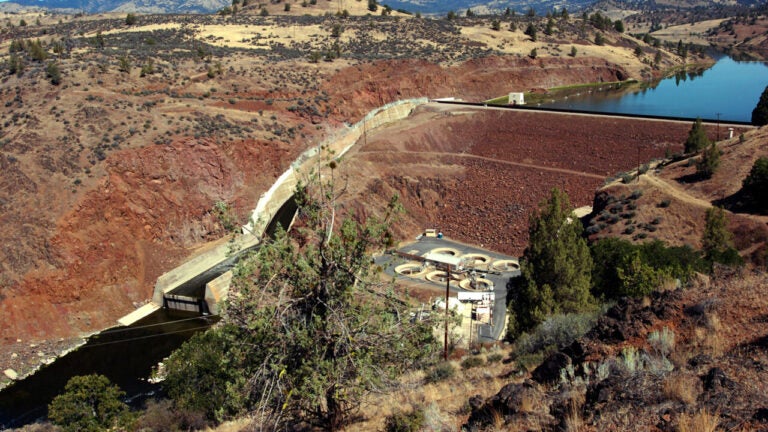
(Photo/AP News)
Restoring the Klamath River: USC experts available to discuss the largest dam removal project in U.S. history
USC experts discuss the Klamath River restoration project
Four aging hydroelectric dams along the Klamath River, which runs through Oregon and California, will be demolished by 2024.
The $500 million project promises to restore the river to its natural, free-flowing state and unlock over 400 miles of essential spawning habitats for local wildlife, including several species of endangered salmon.
USC experts are available to discuss the historic conservation effort and the challenges that climate change poses to water management in the region. Read the full story on USC News here.
Contact: Nina Raffio, raffio@usc.edu or (213) 442-8464
WATCH: The Klamath River revival, explained
Dry conditions force tough choices on the Klamath

“You can’t have the agriculture and ranching without a reliable water supply because it’s too dry. But you also can’t have the fish with the dams that make the water supply reliable. There’s tension there that is hard to escape.”
Craig researched climate resilience in the Klamath River as part of an NSF-funded group studying adaptive governance of U.S. water systems. They discovered that to make the river more resistant to climate change’s drying effects, we need to change how we distribute water from the river and modify infrastructure blocking the salmon runs.
Contact: rcraig@law.usc.edu
The Klamath ‘no longer resembles a natural river’

“When we dam up rivers, we substantially alter natural processes, both in terms of the flow of water and the flow of sediment which help maintain the landscape and has significant impacts on water quality,” says Luhar, an associate professor of aerospace and mechanical engineering and civil and environmental engineering at the USC Viterbi School of Engineering.
Contact: luhar@usc.edu
Public utilities will profit from the dam removals, experts say

Hiatt explains that PacifiCorp, the utility company that owns and operates the hydroelectric dams, stands to profit from their removal. Public utilities provide services under state contracts and earn about a 10% margin, says Hiatt. Expanding services is a common way for utilities to increase profits, and in this case, they plan to offer dam removal and remediation services.
“Building out infrastructure or even taking that infrastructure away is still a win for them on their books,” he says, adding that PacifiCorp plans to shift costs to consumers via their electricity bills.
Contact: shiatt@marshall.usc.edu



